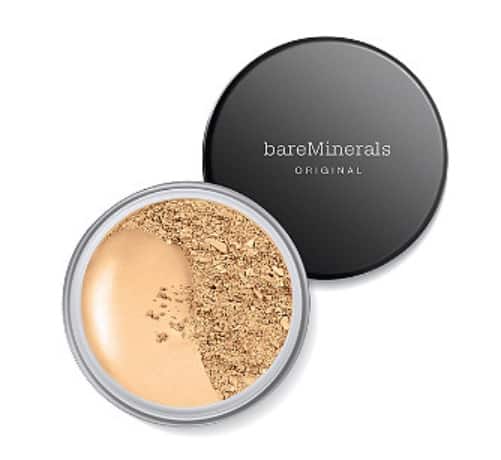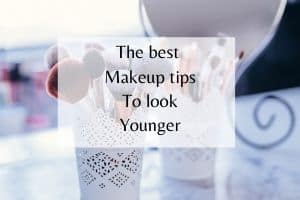Powder vs liquid foundation: Which one is best for your skin, when to use each, best products and pro tips!
Wearing makeup is the easiest and most enjoyable way to achieve a lovely polished look. Many of us enjoy exploring and learning about the numerous makeup choices available on the market today. When it comes to foundation, there are a lot of options to choose from, which could be pretty overwhelming, especially if you’re a makeup newbie.
A good makeup look starts by creating a smooth canvas on which to work.
The best way to go about it? Foundation! Foundation works by evening out your skin tone, blurring blemishes and imperfections, and acting as a fantastic base for layering on blush, bronzer, highlighter, and other products.
But how do you choose what foundation to use? What would be better for your skin-a solid foundation or a liquid foundation? What type of finish are you going after? What is the best method for applying foundation to achieve the look you desire?
No need to panic!
We are here to guide you and help you find the perfect foundation for your skin type.
We will also talk about the best way to apply both liquid and powder foundation and other tips and tricks to get that flawless look.
This post may contain affiliate links. That means if you click and buy, I may receive a small commission (at zero cost to you). Please see my full disclosure policy for details.

Difference between liquid and powder foundation
From pan-cake makeup to BB and CC creams, foundations have evolved a lot over the years. Significant innovations in the beauty and skincare industries have helped to create foundations that appeal to consumers of all skin types and shades. Liquid or cream-based foundations and powder foundations have withstood the test of time and remain hugely popular among makeup users today.
Liquid foundations have a liquidy or cream-like consistency. They have a water-based or water+silicone-based formula with pigments and usually additional beneficial skincare ingredients. They come in different coverage levels and finishes that cater to people of different ages, skin tones, and textures.
Powder foundations are created in a solid form and comprise pigments, binding agents, minerals, and sometimes talc, all finely milled. They come in both pressed and loose forms and are loved for being weightless on the skin and travel-friendly. Powder foundation is a good choice for those seeking light to medium coverage and a finished look on their skin.
How to choose between liquid or powder foundation?
If you’re new to makeup, the best place to start is with a good foundation that matches your skin tone and is simple to apply.
There are several reasons to adore both liquid and powder foundations. To make things easier, let’s look at some of the differences.
Liquid foundation
- Type: They are available in many forms, including cream, serum, mousse, BB cream, CC cream, tint, etc. While some require a brush or sponge to blend, others only need your fingertips. There are products aimed at oily, dry, and even combination skin types.
- Finish: Some foundations are intended for a matte or demi-matte finish, while others are for a dewy or natural appearance. Depending on the finish, you may have to set the foundation with powder.
- Shades: Liquid foundations come in a wider range of shades and undertones when compared to powder foundations (some companies offer up to 50 shades!). If you’re having issues finding a decent shade match, liquid foundation is a terrific option.
- Coverage: Full-coverage foundations help cover and minimize all imperfections on the face. A heavy application could result in a cakey appearance and the product settling into pores and fine lines. They might also not be the best choice for mature skin.
Cc creams, tints, and serum foundations provide medium-to-light coverage and are buildable. They are for everyday use and help your skin look like your skin. The degree of coverage you need depends on your skin type and how much of it you would like to peek through.
- Skincare ingredients: foundations nowadays contain many wholesome skincare elements such as hyaluronic acid, vitamin C, and even SPF, which provide added benefits to the skin.
Powder foundation
- Type: They are available in two forms: pressed and loosely packed. A few simple swipes are all it takes to blur blemishes on the face and remove any shine.
- Finish: There aren’t too many different finishes for powder foundations. Because they’re powdered, they absorb oil and give the face a matte or demi-matte finish, with some adding a luminous effect. They’re great for a light makeup look in the summer or while you’re out and about.
Powder foundations work well on a diverse range of skin types and textures, but those with dry or mature skin might find that the product clings to dry patches or settles into wrinkles, giving the face a chalky appearance.
- Shades: Powder foundations come in an array of hues, but they aren’t as expansive as liquid foundations. You might be able to get away with shades similar to your own as long as they are for touch-ups or light applications.
- Coverage: Powder foundations are seldom recommended for full coverage application. According to beauty experts, medium or sheer layers of powder foundation provide the best results. Heavy layers can make your face look cakey, with the powder settling into lines, wrinkles, and pores.
- Ingredients: Powder foundations typically contain clean, skin-friendly, non-comedogenic ingredients such as minerals and SPF, along with skin-enhancing pigments. Yet, some brands consist of questionable components such as talc, making them less appealing.
Selecting a foundation may seem like a hit-or-miss affair. But, with some trials and tests, you’ll be able to find your ideal match!
How to use liquid or powder foundation?
Everyone has their preferred method of applying makeup. The ideal application method is simple, quick, and leaves your skin looking smooth without being streaky or smudgy.
Let’s take a look at how to apply liquid and powder foundations.
NOTE: I have a post on exactly what to apply to your face before applying any makeup for a flawless face. I recommend doing the skin-prep steps on the post and then, follow the next steps.
The best way to apply Liquid foundation
The technique used to apply liquid foundation is dependent on the formula and consistency of the product. Because products like serums and skin tints have a thinner consistency, they can be applied directly with your fingertips.
The foundation will melt effortlessly into the skin due to the warmth of your fingers.
Brushes and sponges are the most popular tools for applying liquid foundation to achieve a fine finish. Synthetic brushes, in particular, pick up relatively little product, reducing waste and allowing for easy application and blending.
If you want a full-coverage look, a makeup brush like this one here is the way to go.
Sponges are dampened and used to dab foundation all over the face, resulting in a natural-looking coverage. This one here is the best makeup sponge ever!
Even though sponges absorb more product than brushes (and hence aren’t ideal for more liquidy foundations), they can be a better tool to build up layers without looking heavy. This approach works well for those who have dry and textured skin.
Makeup applicators can also work in conjunction with one another.
PRO TIP: A damp sponge can remove any excess product left after brush application. This will give the skin a more natural look while also reducing the appearance of texture and dry areas.
The best way to apply Powder foundation
Unlike liquid foundations, powder foundations require relatively little time and precision for application.
If you only need light coverage, use a fluffy brush like this one. Placing the product on the face and buffing it with a light hand will give you an even application and minimize caking.
Powder puffs are great for touch-ups, and if you want full coverage from your powder foundation, experts suggest using makeup sponges.
Whichever product and application method you choose, it is essential to start with a clean face that has been well-prepped and moisturized. Primers and other products can be applied if necessary. Also, remember to use clean fingers or applicators for a precise application and to avoid any bacterial growth on the surface.
Master Makeup Program – Online
Transform your passion into expertise with the Master Makeup Program: from makeup basics to professional tips from a working makeup artist! Includes digital guides, a MAKEUP MANUAL delivered to your home, 1:1 FEEDBACK, and a CERTIFICATE PLUS bonuses– all in one online self-paced program!
More than $480 value, regular price $97
NOW ONLY $67!
Liquid or powder foundation for oily skin?
Good news! If you have oily or acne-prone skin, there are plenty of liquid and powder foundation choices available for you.
Many liquid foundations are designed solely for oily skin types and are mattifying, long-lasting, transfer-free, and do not clog pores. Always opt for an oil-free foundation that provides a matte or semi-matte finish.
Our Favorite Liquid foundation for oily skin is this one here by LANCOME. I love that it’s long-lasting and gives a mattifying but natural finish, which is exactly what an oily skin needs.
Powder foundations are great for oily skin because they contain oil-absorbing elements that absorb any excess oil your skin produces.
Our favorite powder foundation for oily skin is this one here by L’oreal! It’s a full coverage foundation with a matte, waterproof formula.
On hot, humid days, they minimize the oil, sweat, and blemishes on your face. Unlike liquid foundations, they can be easily reapplied with a powder puff.
PRO TIP: Avoid wearing powder foundation on top of liquid foundation to set it. This can lead to cakey-looking skin. Either apply your powder foundation alone or set your liquid foundation with a translucent powder like this one.
Liquid or powder foundation for dry skin?
Liquid foundations are quite versatile, with hydrating formulations doing wonders for dry, flaky skin. A skin prep routine is vital before any foundation application to avoid accentuating any dry spots on your skin.
Foundations with a nice mix of moisturizing, illuminating, and skincare properties will apply smoothly to the skin and won’t crack or settle into lines. Sponge application is also an effective method.
Powder foundations may not sit well on dry skin, but that does not mean you should avoid them! A lightweight hydrating powder and a gentle application will ensure a good finish without looking chalky.
liquid or powder foundation for mature skin?
For Mature skins, in general the best way to go is with lightweight liquid foundations.
There are many liquid foundations available today with anti-aging benefits. They are great for concealing imperfections, blurring lines and wrinkles, and evening-out skin tone. Some of them also contain SPF. For mature skin, BB and CC creams are great options.
Finding a good powder foundation for mature skin can be difficult as powder emphasizes the appearance of age-related marks on the face. If you want to go for a powder foundation, choose a creamy, blendable formula that contains hydrating ingredients.
However I have found some face powders that work great with mature skin! check this list of face powders with anti-aging ingredients that melt flawlessly on the skin, blur fine lines and wrinkles and have a lightweight coverage
Does liquid or powder foundation last longer?
Many factors influence the lasting power of foundations. But in general, liquid foundation last longer.
Some brands of long-wear liquid foundation claim to last up to 24 hours! Heat, humidity, and other environmental factors notwithstanding, long-wearing foundations are a good bet to keep your makeup looking fresh throughout the day.
While powder foundations can provide full coverage, the best bit about a powder is its weightlessness and ease of reapplication. It is convenient to use a powder and continue to touch up throughout the day for a flawless face.
Regardless of the type, there are steps you can follow to ensure that your foundation lasts longer and stays beautiful:
- Exfoliate your face and apply a moisturizer.
- Use a primer to create a smooth canvas for laying down the foundation.
- Apply the foundation and build layers, taking only a small amount of product at a time.
- Set everything in place with a powder (when using a liquid foundation).
- Finish with a setting spray and, if necessary, set everything in place using a damp sponge.
To get the best effect, select skin products best suited to your skin type and the style of foundation you plan to use.
Check the complete guide on how to finally get rid of DRY,PATCHY, FLAKY and CAKEY Foundation with the exact ways to get flawless foundation everything you wear makeup!
Does powder foundation look more natural?
Powder foundation certainly makes it a breeze to attain a natural your-skin-but-better finish.
The key is to avoid being too heavy-handed with your application and to brush the product with light swipes across your face.
A good amount of prepping and setting spray will ensure that the powder sits as naturally as possible on the skin without budging.
That said, liquid foundations like serums and tints also work (with a bit of powder on top) if it is a natural finish you are after.
Related post: 5 Best Hydrating Foundations with Hyaluronic acid!
Powder or liquid foundation for summer?
Powder foundations can be your best friend if you are averse to wearing heavy face makeup during the hot, humid summer months. The powder particles stay put on your face, absorbing sheen and oil, making you summer-ready with a few easy swipes.
We discussed the different techniques to get your foundation to stay put if you use a liquid or a high-coverage long-wearing foundation. A BB or CC cream that can be blended easily on your face with your fingers is a more convenient option for the summer months.
Best powder foundations
Both high-end luxury and affordable powder foundation brands are available in plenty today. Here are a few top picks for powder foundation among powder users:
1. Bareminerals original loose powder foundation

(Clean ingredients, high-end): The market pioneer is known for its clean mineral-based formula that gives a naturally luminous finish and has SPF.
2.L’Oreal Paris Infallible Fresh Wear Foundation in Powder

(Long-lasting, full-coverage, affordable): This hugely popular pressed powder is weightless, waterproof, heatproof, matte, and long-lasting.
3. MAC Studio Fix Powder Plus Foundation

This is a wonderful product for oily skin. It is non-cakey and doesn’t clog pores or cause acne.
Conclusion on powder vs liquid foundation
There is no good way to determine whether powder foundation is better than liquid foundation or vice-versa. It is all a matter of preference and what works for your skin. A good hack is to have a couple of different products on hand and use them as needed.
Finding the perfect foundation might seem overwhelming, confusing, and time-consuming. But it could also be a fun experiment! Have fun sampling a few foundations the next time you visit a makeup store. Do remember to keep our tips in mind!
What’s Next? Related Makeup Foundation posts:
- 12 Irresistible Foundation Dupes vs their luxury counterpart! (Reviewed)
- The Best Foundation Powders for Mature Skins (Tips + Guide)
- Easy Makeup without Foundation Tutorial (Step-by-step)
- 10 Best Drugstore Foundations that Won’t Clog your Pores! (Drugstore foundations for acne/oily skin)
- Concealer or Foundation First? (A Definitive Guide!)




